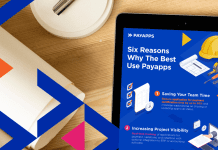Dispute resolution specialists Kenzie Group take a look at the key considerations and steps to take when addressing dispute resolution within construction projects
The very nature of large construction projects means they have a tendency to be complex. A lot of contractors and subcontractors, an abundance of moving parts which can, and often does, result in dispute which can be disruptive and expensive to a project.
As dispute resolution specialists for construction in a whole host of industries, we wanted to share some of our expertise while we take a look at the key considerations with dispute resolution and how we address these considerations as part of your dispute procedure.
Key considerations for choosing methods of dispute resolution
Plan for a dispute: Having the right procedures in place, at the contract agreement stage, is paramount. Leave as little as possible to interpretation. For example, we might advise to specify provision for 3rd party arbitration, to ensure a clear adjudication process, with binding results and specific rights of appeal.
Timeliness of resolution: Have a clear stipulation of the timeline for resolution. When a dispute occurs, which is often the nature of construction projects, it tends to cause disruption, not only with the disputing parties but with interfacing parties who are reliant on one contractor to be able to deliver their own obligations to their agreed deadline and cost. Having a clear timeline will mitigate the disruption as much as possible.
On shorter projects, you might consider dispute parking. This is an agreement to resolve the dispute upon completion of the project; however, this may not be ideal for long-term projects due to the delay, but also because key personnel won’t have the same recall or availability 2 years down the line.
Proportionality: You’ll want to ensure the process of resolution is proportional. Disputes have a cost applied to them, with minor disputes the cost or resolution has to be proportionate to the cost of the dispute. You should ensure your dispute resolution procedure takes into account proportionality. Have quicker, more affordable procedures in place to deal with lesser disputes.
Confidentiality: You’ll want to ensure that your dispute resolution procedure also has clauses relating to confidentiality to protect your data.
Multi-party clarity: To protect yourself against disputes that might include multiple parties you’ll want to have provision in your contract to deal with that. One option is to have a dispute procedure that allows you to incorporate disputes with various parties into one single dispute, to save time and money.
This is particularly salient when dealing with disputes with different tiers of contractor, such as with a supply chain. A dispute at one link of the supply chain is likely to result in delays and additional costs or charges further down the chain.
What dispute resolution options are available?
It’s our experience that there are 4 main dispute resolution options you could opt to use, depending on the complexity and scale of the project.
1. Adjudication
This is one of the primary dispute resolution procedures utilised by the US. In some cases it’s part of the statute, but it’s always a good idea to make it a contractual right, to avoid any misinterpretation or understanding.
The reason for its “popularity” is that it offers a lot of advantages. It includes confidentiality, speed and cost proportionality. For many of our clients, the most important benefit is that it offers less disruption than other, lengthier procedures.
But it’s not all positive; it has some drawbacks. It’s not legally conclusive, which means if the decision is not upheld by all parties, a final determination will be required from the courts or formal arbitration. Another disadvantage is that it’s not suitable for more complex, multi-party disputes. The 28-day adjudication process it tight with only 2 parties, but with more, it makes it near impossible.
2. Litigation/Arbitration
Litigation: Having your day in court allows for a concrete decision, finality is important. But the other clear advantage of litigation is that the court has the ability to hear multiple court claims and convert or consolidate them into a single claim, especially when looking at supply chain related disputes.
3. Dispute Boards
For larger and more valuable projects, a dispute board could well be a viable option. They offer the same confidentiality as arbitration but can deal with multi-party disputes more effectively, and more quickly than litigation or arbitration.
4. Expert Determination
When looking for coverage on smaller, more technical disputes, that don’t need to contest “law of facts” using expert determination is a great option. It’s a lot quicker and cheaper than other dispute resolution solutions.
Have an escalation procedure in place
It’s often prudent to specify steps that should be followed before a dispute is formalised. It’s a good idea to include the steps in the contract. Some common examples include a meeting of senior representatives, mediation. It’s clear to be specific what’s expected from all parties and that it doesn’t undermine a party’s entitlement to adjudication.
The key takeaway is that there is no one form of dispute resolution that fits all projects. Too many projects have boilerplate dispute procedures in place, which are often insufficient. They can be expensive whereas, taking the time to put the right dispute resolution in place can save you a headache and money in the long term.
Joe Bond
Kenzie Group Ltd
Twitter: @KenzieGroup
















